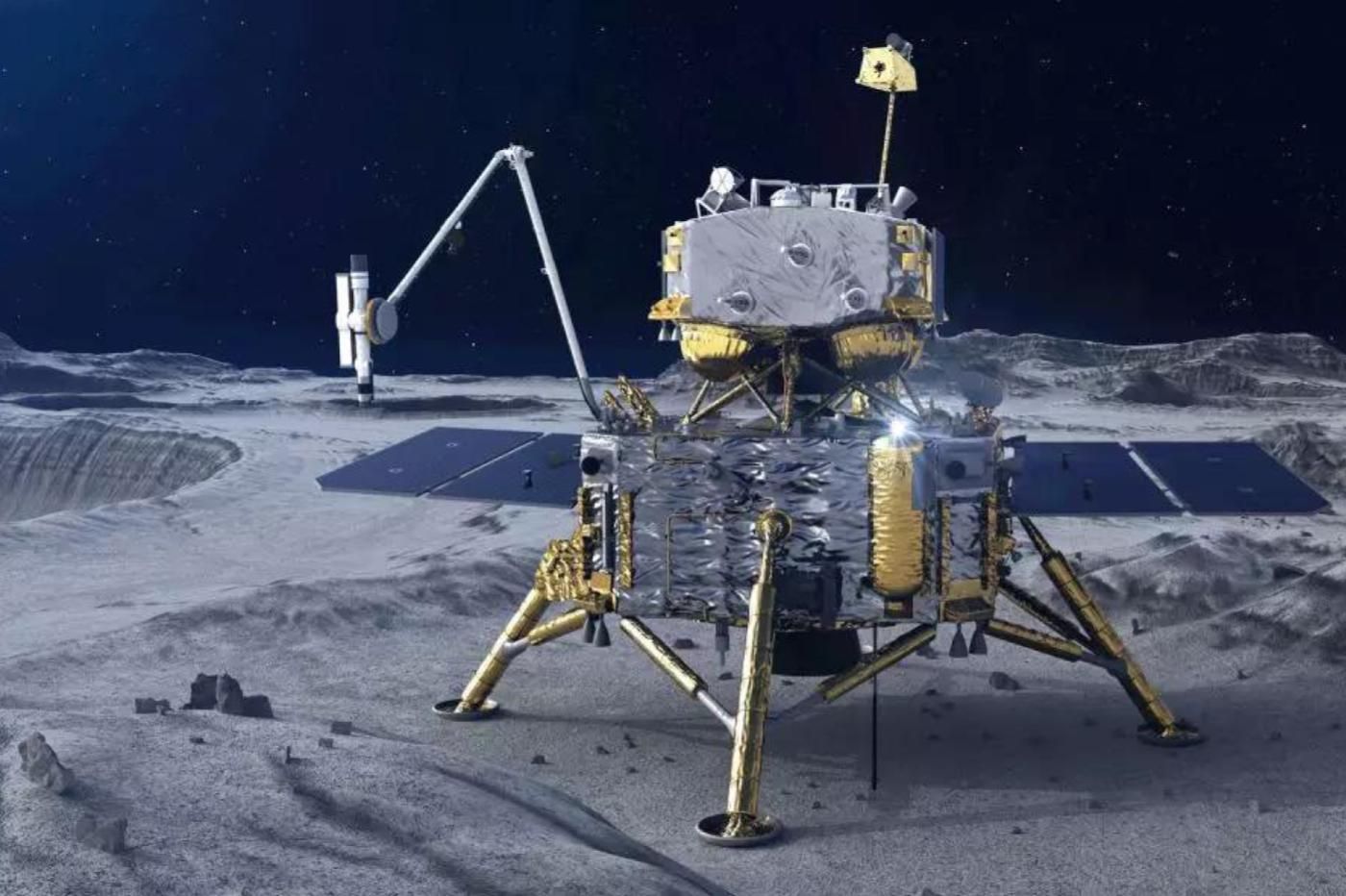Follow us on Google News (click on ☆)
These materials, collected from the South Pole-Aitken Basin, suggest a lower water content compared to samples from the near side. This discovery could influence future lunar missions.

Artist's impression of the Chang'e 6 mission
© CNSA / CLEP
The study, published in Nature, is based on the analysis of 578 lunar soil particles. Researchers estimated the water abundance to be less than 1.5 micrograms per gram. This value is significantly lower than measurements taken on the near side of the Moon.
Scientists have proposed several hypotheses to explain this difference. The impact that formed the South Pole-Aitken Basin may have redistributed water to the near side. Another possibility is an uneven distribution of water between the two lunar hemispheres.
The implications of these findings are significant for lunar exploration. Although the far side appears drier, planned missions by NASA and China are focusing on polar regions. These areas could harbor water ice in permanently shadowed craters.
NASA's Artemis mission aims to send astronauts around the Moon in 2025, with a landing near the south pole planned for 2027. China, meanwhile, is targeting a crewed Moon landing by 2030. These missions could benefit from available water resources.
Researchers emphasize the need to collect more samples to confirm these results. A better understanding of water distribution on the Moon is crucial for understanding its evolution and supporting future crewed missions.
This study marks an important milestone in lunar exploration. It highlights the differences between the two sides of the Moon and paves the way for new research. Upcoming lunar missions may provide answers to many remaining questions.
Why is the far side of the Moon different?
The far side of the Moon has a thicker crust and fewer lunar maria than the near side. This difference could be explained by uneven cooling during the Moon's formation.
Meteorite impacts have also played a role in redistributing surface materials. The South Pole-Aitken Basin, for example, resulted from a major impact that exposed lunar mantle materials.
Water distribution may be influenced by these geological processes. Scientists are working to understand how these factors have shaped the lunar surface over time.
How is water detected on the Moon?
Water on the Moon is detected using instruments that measure the spectral signature of water molecules. These instruments can be mounted on orbiters or used in laboratories on samples.
Scientists also use techniques like mass spectrometry to measure water content in lunar samples. These methods can detect trace amounts of water.
Future missions may use more advanced technologies to map water distribution across the lunar surface. This data will be crucial for crewed missions and establishing lunar bases.